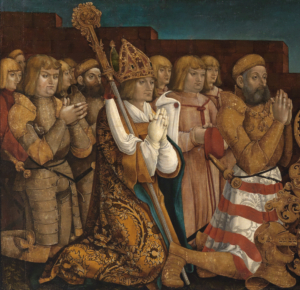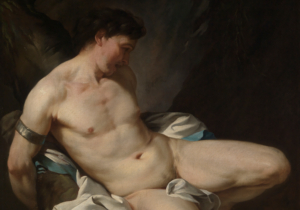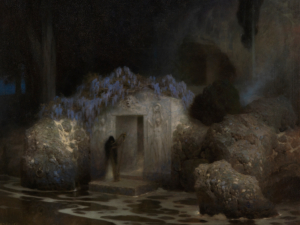500 years of the presence
0:00
0:00
500 years of presence
Collecting, conserving, researching, interpreting, exhibiting: these are, in short, the tasks of a museum as defined by the International Council of Museums. Obviously, only what has been collected can be conserved, studied, exhibited, and interpreted. The collection is therefore the basis of all the museum’s work.
The idea behind the creation of art museums in Europe was from the outset to secure and preserve the art of earlier epochs, the cultural heritage. This tour, however, does not tell the usual tale of the Kunsthalle collection’s history. Instead, the focus is on the collectors’ view of the times in which they lived. The Margraves and Margravine of Baden already began collecting art in the 16th century with varying degrees of zeal. They wanted to promote young talent, appeared as patrons, wanted to see themselves reflected and brought to the attention of others through art. In this respect, collecting contemporary art is older than collecting historical works and thus older than the museum. However, the Kunsthalle’s founding statutes from 1837 also explicitly mention collecting the art of the particular time. From the very beginning, the Kunsthalle has collected historical and contemporary art.
The collection has grown with each new generation. Contemporary acquisitions of earlier eras became historical for those born later, and present and past gradually intertwined. With growing awareness of history, the museum’s directors are consciously aware of this interlocking and have used it to shape and sharpen the collection’s profile.
What were the interests, then, of the earlier collectors and museum managers when they looked at their respective here and now? And according to what criteria do today’s curators select from the wide spectrum of our contemporaries? While many opinions exist about older works of art that are two, three, or five hundred years old and which decide whether a work is of value and lasting, criteria for acquiring contemporary art are much more difficult to determine. Aware of how idiosyncratic each work of art is, today’s interest is also directed to the lines of connection that can be drawn between older works and contemporary artistic approaches. A few surprising breaks in the otherwise chronological structure of our collection presentation will show you just how diverse these points of connection are. Embark on a journey through 500 years of the present.







